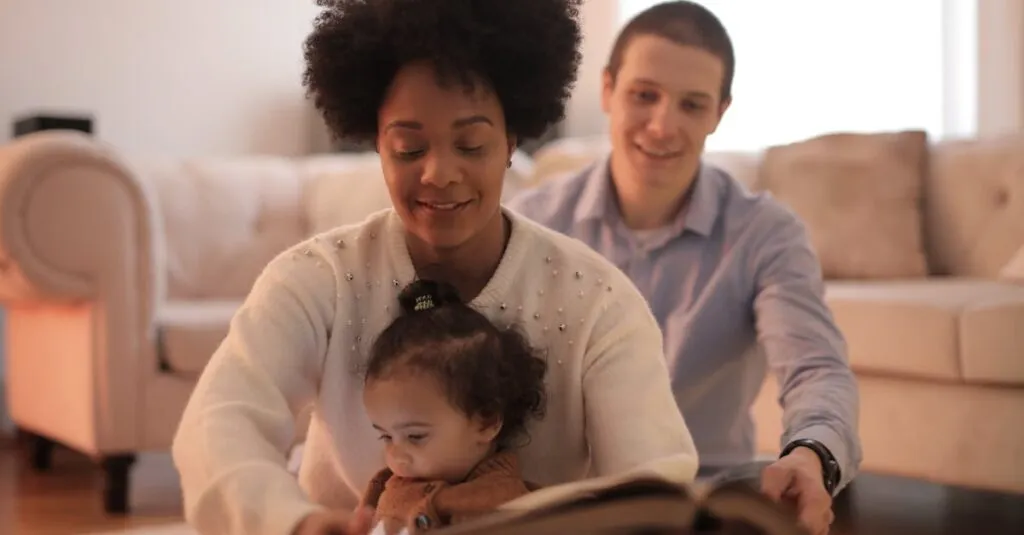Embrace the Emotional Rollercoaster
Tantrums are like thunderstorms in the parenting journey – loud, unpredictable, and often come with a flood of tears. But these emotional outbursts are normal and even healthy for child development. When little Tommy transforms into a floor-thumping whirlpool of emotions at the grocery store, remind yourself it’s his way of learning about boundaries and frustrations.
Try seeing the humor in these dramatic performances; after all, who among us hasn’t wanted to lay on the floor when life’s lemons turn particularly sour?
Understanding tantrums as a natural stage helps soften your own reaction and prepares you to nurture your child through them. With patience, acknowledging the root cause of tantrums can make navigating these emotional storms smoother for everyone involved.

The Art of Staying Calm
Picture yourself as a zen master – calm, composed, and impervious to the chaos surrounding you. When dealing with tantrums, this mindset is a superpower. It’s easy to feel your stress escalate alongside your child’s cries, but staying calm is crucial.
Take deep breaths and maybe even count to ten (or thirty). Kids are keen emotional sponges; if they sense your distress, it amplifies their own. Instead, show them that you’re an unshakeable beacon of calm.
Humor can be a powerful ally here. Remember that one time you mistakenly wore mismatched shoes to work? If you survived that embarrassment, you can certainly handle a screaming toddler.

Turn Meltdowns into Learning Moments
Once the storm settles, tantrums can be great teaching moments for both you and your child. After all, what’s more rewarding than turning chaos into wisdom?
Post-meltdown, discuss emotions with your child. Start simple: ‘Were you upset because you couldn’t have the candy?’ This approach not only validates their feelings but also teaches them to express those feelings with words, not wails. It’s like coaching a tiny diplomat in emotion regulation.
Plus, empowering them with communication skills reduces future outbursts. Kids are resilient; with your guidance, they’ll soon recognize the calm after the storm and maybe even chuckle at their past outbursts.

In summary:
- Recognize the importance of addressing emotions.
- Encourage verbal expression over upset sounds.
- Foster communication skills to decrease future meltdowns.
- Highlight the growth that comes from understanding emotions.
Graceful De-escalation Tactics
Parents know that handling tantrums is less about control and more about empathy and strategy. Picture yourself as a skilled conductor managing an unruly orchestra.
Use distraction as your baton – redirect to something that engages them, like their favorite game or story.
When that fails, remain at eye level with your little one, expressing understanding and empathy. Often, simply acknowledging their feelings can significantly de-escalate the situation.
Humor helps too; if your child is roaring like a lion, join them by pretending to be a fellow creature. This silliness can break the tension and ease both your minds.

Connect and Reflect with Your Child
After surviving the tantrum battle, it’s time for peace talks. Sit down with your child and have a gentle conversation about emotions and outcomes. Avoid being the stern judge and instead become a friendly guide.
Ask them about their feelings and share your own experiences of frustration. For example, you might say:
“Remember when I misplaced my keys and made us late? I felt so stressed!”
Your relatability reassures them that everyone experiences overwhelming emotions. Use these moments to reinforce understanding and teach empathy.
Encouraging your child to reflect helps them feel more in control and supported, ultimately building a stronger emotional foundation.

In these discussions, remember to:
- Listen actively to your child’s feelings.
- Share similar experiences to normalize their emotions.
- Encourage them to express how situations make them feel.
By fostering these conversations, you create a nurturing environment that promotes emotional intelligence and resilience in your child.
